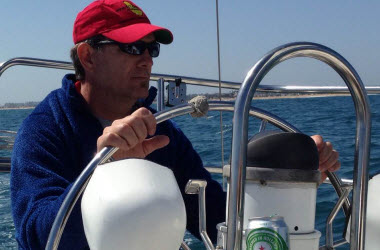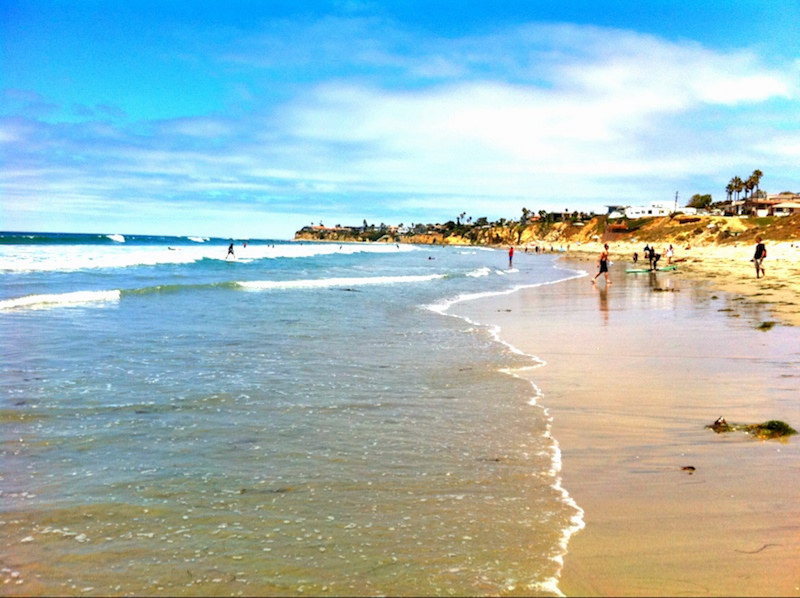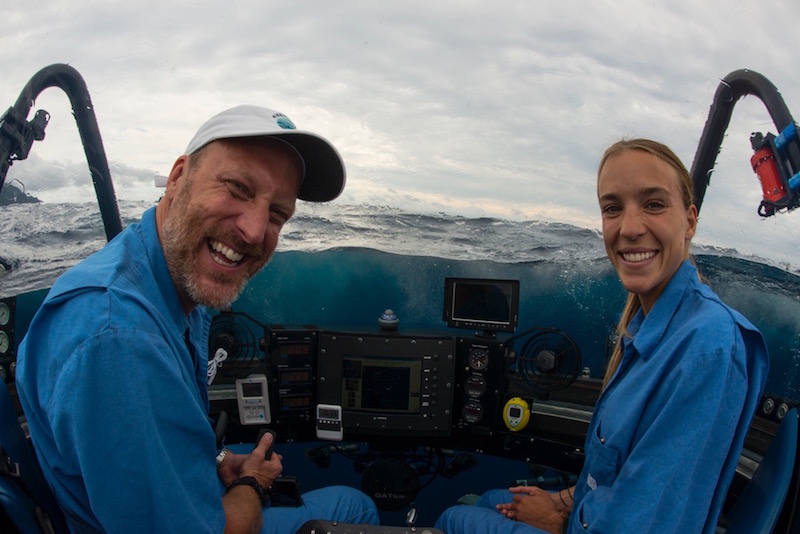August 15, 2018
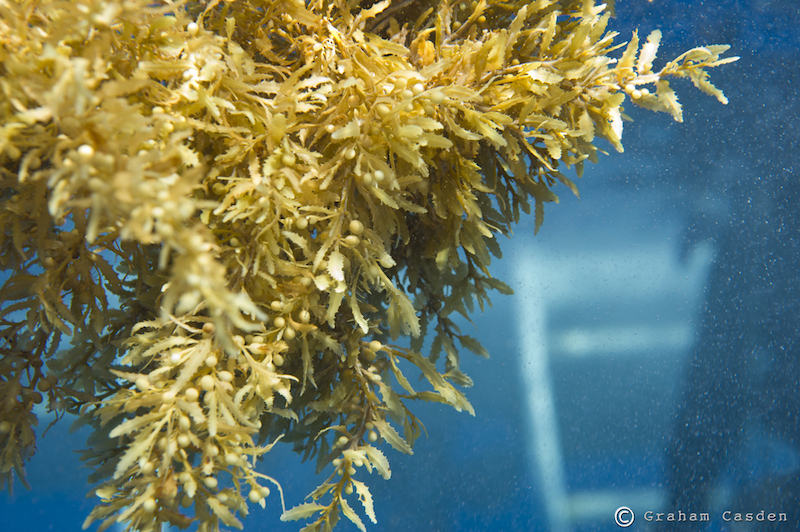
If you’ve ever been to the beach on the east coast of FL, or anywhere in the Caribbean, chances are you’ve observed small clumps of tiny, grape-like golden seaweed on the beach. That seaweed is called sargassum. Sargassum is a type of free-floating brown algae. Those tiny little grape-like berries are actually gas-filled structures called pneumatocysts that provide buoyancy so the algae can float at the surface of the ocean and gain access to ample sunlight for photosynthesis.
Giant floating islands of sargassum make unique marine habitats. Stretching for miles across the ocean, these island oases provide food, refuge, and breeding grounds for fish, sea turtles, birds, crabs, and shrimp. Some species like the sargassum pipefish, frogfish, and seahorse never leave the seaweed mats; others, like mahi mahi, utilize the protection of the sargassum temporarily as a nursery.
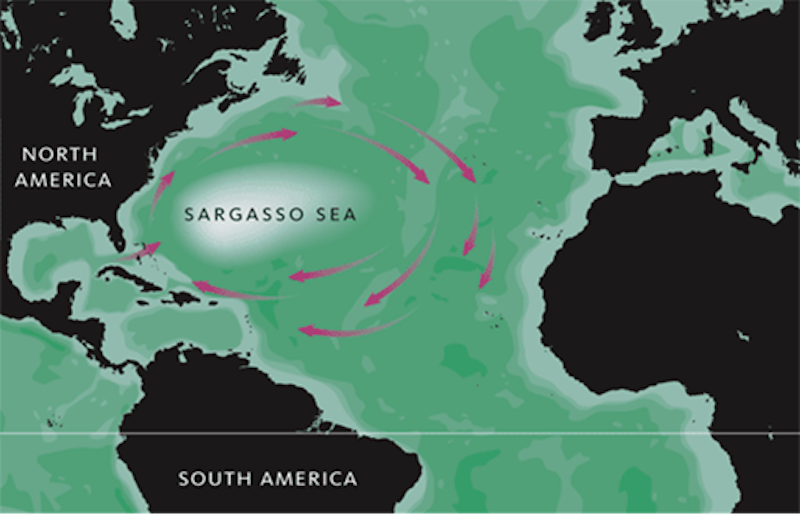
Currently throughout the eastern Caribbean, including the Florida Keys, sargassum has bloomed causing catastrophic fish and invertebrate die-offs. Larger animals like turtles and dolphins get caught in the tangles of seaweed, become stressed, and drown. As the giant mats of seaweed move into harbors, fishermen are unable to leave port and the damage to their boat propellers and fishing gear is not worth the risk. It’s not just the immediate threat of the living seaweed that is of concern. As the algae dies, bacteria will break it down, utilizing much of the oxygen in the surrounding waters and producing toxic hydrogen sulfide gas. So, what’s causing the unusually large blooms of sargassum?
Scientists aren’t sure. It’s not a regular occurance. It is only since 2011 that excessively large quantities of sargassum have washed ashore at various Caribbean countries. Evidence suggests that a combination of nutrient runoff from agricultural fertilizers and pollution plus increasing sea surface temperatures caused by climate change are contributing factors. Sargassum thrives in warm, nutrient-rich water, able to double its mass in just 11 days under normal oceanic conditions. As sea temperatures increase, these sargassum blooms might become more common, negatively impacting the entire Caribbean Sea ecosystems from fisheries and coral reefs to the economies of many Caribbean nations.
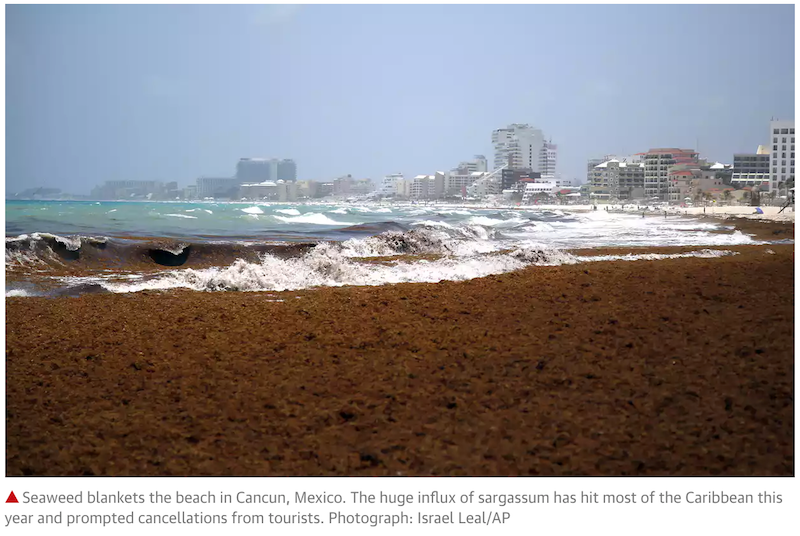
So, what’s being done? The immediate removal of the offending seaweed is being accomplished by tractors and other heavy machinery on the beach. The tractors grate the sand, collecting the clumps of seaweed in trucks where it is, most often, hauled off to the dump. Some locations have implemented modified fishing vessels that scoop up the seaweed via conveyor belts where it is then brought to the landfill. While the removal and disposal of the seaweed mats are a temporary solution some are considering other long-term, commercial solutions.
A few suggested solutions include using the washed up algae as a health drink or tonic, turning it into biodiesel, animal feed, or even plant fertilizer, but significant testing would need to take place prior to any of these ideas coming to fruition. The availability of the seaweed is relatively uncertain. While it’s been in the ocean for eons, it is only recently that it has become so chokingly abundant. Also, unlike many algaes used in the food industry, sargassum contains high levels of arsenic, a deadly toxin.
What do you think of the sargassum blooms? Would that much algae on the beach deter you from your vacation in the Caribbean?
What solutions can you come up with that would divert the seaweed from landfills throughout the Caribbean and Florida?

